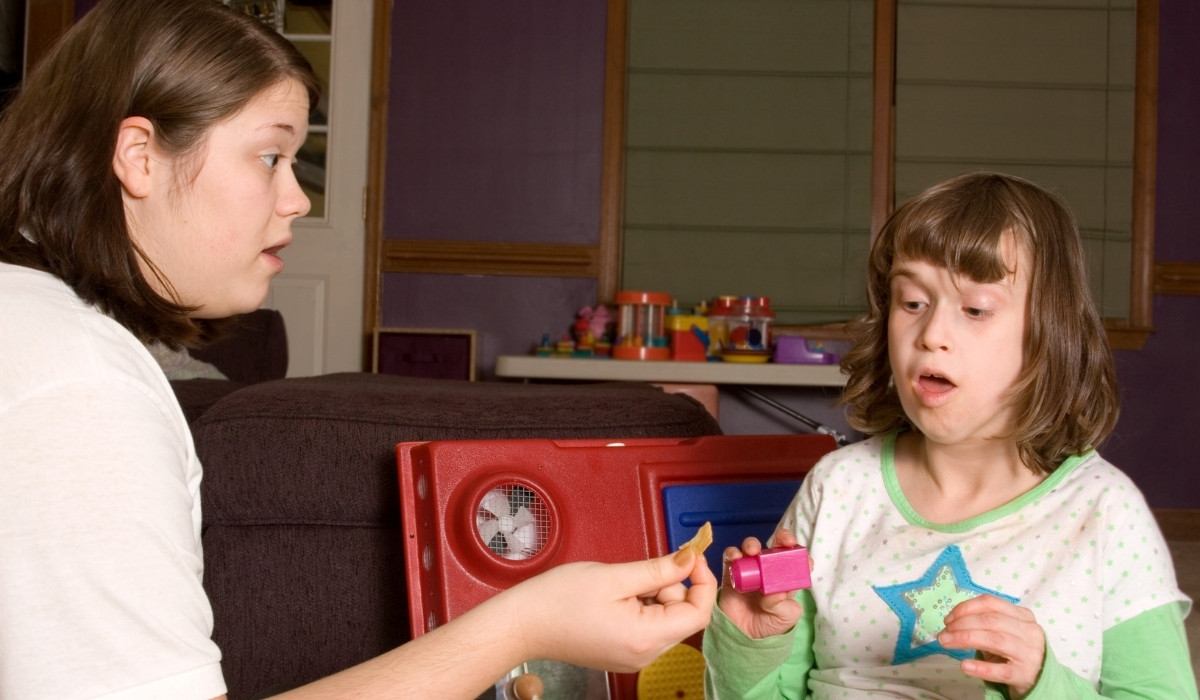
Key Points:
- FCT in ABA therapy replaces challenging behaviors with effective communication skills.
- Functional communication training reduces problem behavior by teaching appropriate ways to express needs.
- Successful FCT involves identifying the behavior function, selecting clear communication responses, and reinforcing those alternatives consistently.
In recent years, Functional Communication Training (FCT) has gained recognition as one of the most effective tools in ABA therapy. According to one study, FCT reduced problem behaviors by an average of over 90% across varied populations, especially when combined with differential reinforcement and caregiver training.
This remarkable success rate highlights how powerful communication is in replacing disruptive behaviors. FCT gives children socially acceptable ways to express needs—like requesting a break or attention—instead of using hitting, tantrums, or screaming. In this article, we’ll explore what FCT in ABA therapy involves, how it works, and why it may be the key to helping your child thrive.
What is Functional Communication Training in ABA Therapy?
Functional communication training (FCT) is an evidence-based intervention that teaches alternative communication to replace challenging behavior that serves the same purpose.
FCT is grounded in identifying the function of behavior—why a child acts out. Instead of a tantrum to avoid work, FCT teaches the child to say, sign, or point, “I need a break.” By offering a socially acceptable behavior that achieves the same goal, the child’s problem behavior naturally decreases.
What are Common Types of Functional Communication?
FCT begins with a Functional Behavior Assessment (FBA). This process reveals what the child gains through the behavior: attention, escape, access, or sensory stimulation. Because of this, functional communication can look very different depending on a child’s age, preferences, and developmental level.
Common methods include:
- Vocal Mands: Verbal requests like “Help me,” “More,” or “All done.” These are ideal when speech is emerging or supported.
- Sign Language or Gestures: Some children may successfully request “eat” or “break” using ASL signs or simple gestures like pointing, waving, or nodding.
- PECS (Picture Exchange Communication Systems): A picture card represents the desired item or break, which the child hands to an adult to communicate effectively.
- Eye-Gaze or Touch in AAC: Electronic devices or tablets that generate speech can be used when verbal or sign communication isn’t yet present.
Each tool is chosen based on a child’s strengths, mobility, and attention span.

Why is Functional Communication Training Important?
Functional Communication Training (FCT) is essential because it addresses the root cause of challenging behavior—communication deficits. Instead of simply trying to reduce problem behaviors, FCT teaches children more appropriate, effective ways to express their needs, such as requesting a break, asking for help, or gaining attention.
By replacing disruptive behaviors with meaningful communication, FCT not only decreases stress for families but also empowers children with skills they can use across settings. FCT can significantly reduce problem behaviors while improving social engagement, independence, and overall quality of life.
How is FCT Implemented?
Functional Communication Training (FCT) is a structured ABA strategy designed to replace challenging behaviors with meaningful, socially appropriate communication. To be successful, it must be individualized, consistently applied, and rooted in a clear understanding of the behavior’s function.
Implementation involves a step-by-step process that ensures the new communication method is effective, reinforced, and eventually generalized across environments. Each phase is carefully monitored through data collection to assess progress and make needed adjustments:
1. Identify the Target Behavior and Its Function
The team conducts a Functional Behavior Assessment (FBA) to determine why the behavior occurs—escape, attention, access, or sensory.
2. Select a Communication Response
Based on the behavior’s function, a simple, appropriate alternative is chosen, like a word, sign, or picture card.
3. Prompt and Reinforce
The child is prompted to use the new communication tool and is immediately reinforced with the desired item or outcome.
4. Fade Prompts
Gradually reduce prompts to encourage independent communication, promoting skill mastery and lasting behavior change.
5. Generalize Across Contexts
Practice and reinforce the communication skill in different environments—home, school, and public settings—to ensure consistent use.
Data is collected throughout to monitor behavior reduction, compliance increase, and spontaneous communication.

What are Examples of FCT in Action?
Functional Communication Training (FCT) isn’t just theory—it works in real-life situations to replace disruptive behaviors with purposeful communication. By targeting the reason behind a behavior, FCT helps children express needs clearly and effectively.
The following examples show how FCT transforms frustration into functional communication across various behavioral motivations:
1. Escape-Motivated Behavior
A child yells or throws when asked to clean up. FCT teaches the child to hold up a “break” card or say “I need a break.” Once taught, having this communication tool eliminates the need for yelling—because it works just as effectively at removing the demand.
2. Attention-Motivated Behavior
If a child hits a sibling to get attention, FCT teaches “excuse me” with a vocal or physical cue. Once the child learns this, the hitting frequency declines significantly, sometimes by over 70%.
3. Tangible Motivations
A child exhibits tantrums to gain a toy. FCT introduces a “want ball” picture card. The child hands over the card and receives the ball, reinforcing a powerful yet gentle communication alternative.
4. Sensory-Motivated Behavior
Some children self-stimulate to calm themselves (e.g., rocking, hand-flapping). FCT can teach them to request “calm down” or “quiet time,” offering more socially acceptable ways to meet sensory needs and reducing self-injurious patterns.
What are Common Challenges and Solutions with FCT?
Functional Communication Training (FCT) is highly effective, but it doesn’t come without challenges. Understanding these common hurdles—and how to address them—can help families and therapists ensure FCT remains successful, consistent, and empowering across all environments.
Below are some common challenges that may be experienced with FCT:
1. Prompt Dependency
Some children rely heavily on adult prompts to communicate. Gradually fading prompts and reinforcing independent responses help build autonomy and ensure communication becomes spontaneous, not just reactive to adult cues.
2. Generalization Difficulties
FCT must work across settings—not just in therapy. Teaching communication in daily routines, with various caregivers, supports generalization and strengthens consistency in how the child expresses needs.
3. Communication Skill Limits
When speech is limited, FCT can begin with gestures, PECS, or AAC tools. These accessible alternatives allow children to communicate immediately while therapists work on expanding verbal abilities over time.
By monitoring data and problem-solving with BCBAs, these complications are manageable and often short-lived.
How Do You Measure FCT Success?
Measuring the success of Functional Communication Training (FCT) involves more than observing reduced problem behavior. Behavior analysts use clear, objective data to evaluate progress across different areas.
These measurements help determine whether the child is learning to communicate effectively, generalizing those skills across settings, and maintaining them over time without constant support.
Here’s how FCT success is measured:
1. Frequency of Replacement Mand
Track how often the child uses the alternative communication method. Higher frequency over time shows successful skill acquisition and use.
2. Rate of Problem Behavior
Monitor how often challenging behaviors occur. A steady decline indicates the communication replacement is working effectively.
3. Latency to Mand
Measure how quickly the child uses the new communication response after a motivating situation arises. Shorter delays suggest the skill is becoming fluent.
4. Generalization Checks
Assess if the child can use the communication method with various people and in different settings. Successful generalization shows real-world application.
5. Maintenance Data
Observe whether the skill continues without daily prompting. Long-term maintenance reflects lasting impact and true independence in communication.
These metrics help shape next steps, embarrassment the fade prompts, and ensure skills stick over time.
Give Your Child the Tools for Success With ABA Therapy
Training a child to effectively communicate their needs is not just about reducing tantrums—it’s about building confidence and connection. FCT in ABA therapy equips families and children with practical tools to replace frustration-based behaviors with meaningful communication.
At Actify, we offer holistic ABA therapy in Maryland, with FCT embedded in customized behavior plans. Our team partners with families, guiding parents through assessment, intervention design, parent coaching, and skill generalization—turning communication hardships into life-changing breakthroughs.
Reach out to us to learn how ABA therapy in Maryland with Functional Communication Training can help your child express needs, reduce behavior concerns, and strengthen family bonds.
